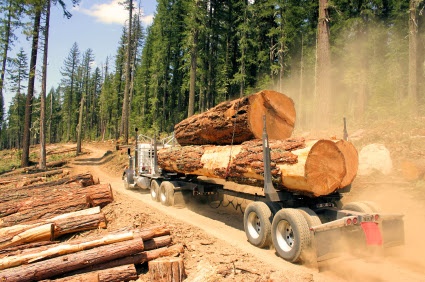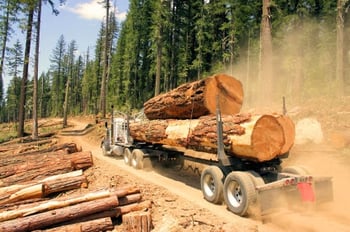
A challenging scenario is unfolding in the Pacific Northwest (PNW) log market, which is being impacted by a convergence of national and global market dynamics. While these dynamics can shift very quickly, it’s imperative that regional participants in the forest supply chain closely monitor how each of these continues to evolve into 2018.
PNW log prices continue to soar. Douglas fir domestic prices in October 2017 crested the $770/MBF mark after consistently remaining above the $700 level since early 2Q2017. However, December brought even higher levels: the weighted average price for delivered domestic Douglas fir logs was $833/MBF, and the weighted average price for export logs was $858/MBF. Some spot prices are now approaching $900/MBF, leaving regional mill facilities wondering how high prices can go before they’re forced to make operational changes.
What else is happening in the PNW log market?
- As I noted last June, projected US lumber demand in 2018 will reach 51.6 BBF and Canadian imports will likely be substantially lower than they were in 2016, which will create a shortage in the market. If Canadian imports make up just 25 percent of demand in 2018 (roughly 13 BBF), US producers (and/or other suppliers) will need to make up the difference of roughly 39 BBF. This equates to a lumber gap of roughly 6 BBF and a number of questions concerning what global region is best positioned to meet the demand.
As Pete Stewart recently wrote, it’s unlikely to come from European exporters. More than likely, a bulk of the demand will be filled by producers in the US South—where prices also continue to increase rapidly. Forest2Market’s southern yellow pine lumber composite recently hit its highest level ($450/MBF) since we began compiling the data over eight years ago.
- Based on these extremely high prices, harvest levels on private timberland that support the regional industry are near maximum sustainable levels. While significant dead, decaying and insect-damaged timber remains on public lands throughout the region, the level of active management and salvage operations on public (federal) lands are not significant enough to help offset demand.
- While high prices are a boon for landowners, a number of regional mill facilities are dealing with dual challenges: 1) Margins for sawmills are shrinking as log prices continue to soar at a faster rate than lumber, and some mills are considering curtailments if this trend continues; 2) Shortages of qualified labor are a concern both in the woods (on the harvesting and trucking side) and in mill facilities.

- Pulp mills in the region—particularly those that rely heavily on primary chips—are struggling to manage a proper mix of supply and associated costs. Due to high prices, sawmills are now aggressively purchasing smaller-diameter logs, which is creating a spike in demand and additional resource competition for pulp mills. In a less intense sawlog market, smaller logs typically go to chip mills for conversion to primary chips. However, chip mills are now having a difficult time competing with sawmills for these logs.
- The dollar recently sank to a three-year low after Treasury Secretary Steven Mnuchin said a weaker dollar was good for US trade while at the World Economic Forum's annual meeting in Davos, Switzerland. The dollar has been tracking downward over the last year, and recently dipped below 90.00 (the euro rose to 1.23/USD and the yen gained 0.8 percent). While a slumping dollar can oftentimes benefit US exporters, the situation is not quite so rosy in the PNW where supply is constrained and prices remain at record highs.
The current situation in the PNW illustrates the fragile relationship between supply, demand and price. High log prices are great for the region, but only if the market will bear the same high costs through the entire supply chain and to market. When raw material costs become so expensive that manufacturers can no longer remain profitable, the market will be forced to adapt. With the confluence of events currently affecting the PNW, 2018 is shaping up to be a year in which we will likely see adaptations.





